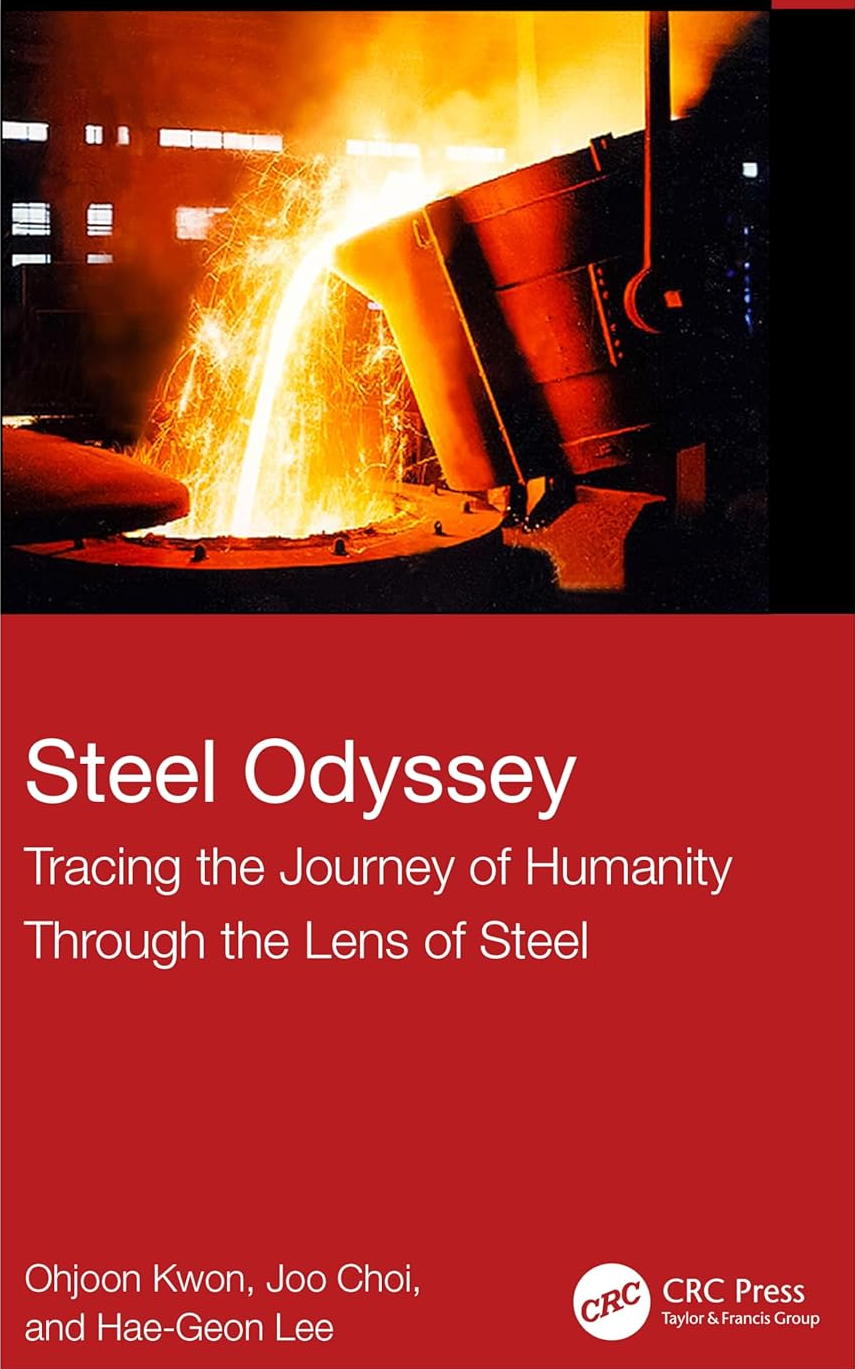
The front cover.
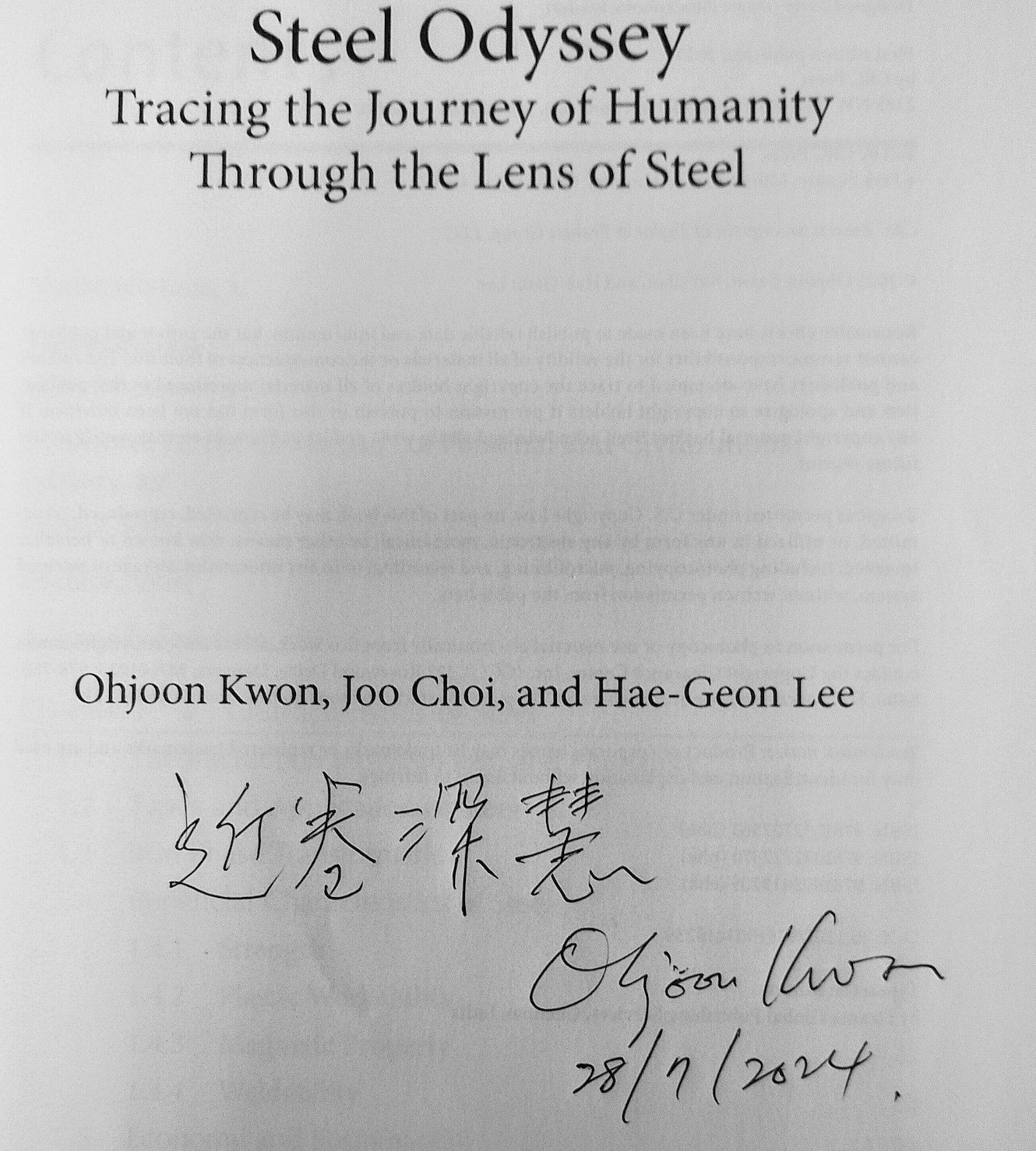
Signed copy sent by Ohjoon Kwon to Harry Bhadeshia
![[Queen Mary University of London]](https://www.phase-trans.msm.cam.ac.uk/QMUL.png)

STEEL can boast of an extensive literature to which many have contributed, but every so often, a gem emerges with a brilliance that consumes the reader. It is in this context that I pay homage to the authors of Steel Odyssey, which true to its title, is an epic written by giants of the subject. But these giants are benevolent in that they have nurtured both the knowledge and practice of steels.
The authors: Ohjoon Kwon has an enviable record of leading one of the most inventive steel companies in the world, while at the same time providing long-term support to academia working on steels. Joo Choi, after heading the research laboratories at POSCO is now a professor at the heart of all things ferrous. Hae-Geon Lee has an admirable record in academia, with selfless devotion to caring for education in metallurgy. This praise cannot ever be enough, but trust me, having these authors write this book gives us an adventure that none should miss.
 The front cover. |
 Signed copy sent by Ohjoon Kwon to Harry Bhadeshia |
Iron has to be treated as royalty, but purely out of reverence. With iron, the atomic structure, the crystal structure, indeed the structure at a variety of length scales can make or break the purposeful objects that are integral to our everyday life. And it’s beautiful metallic bond ensures that atoms in its solid form can slide over each other without the material losing integrity. This makes iron and its alloys safe engineering materials, capable of absorbing and storing energy before fracture. The book introduces the concepts in a way that the reader can communicate them with friends and family. For example, the variety of magnetic phenomena associated with both electrically conducting liquid iron, and it’s different solid states, not only protects life on Earth, but permits ingenious artificial devices that can drive motion.
But making iron is not easy. The first oxygen generated on Earth was consumed by dissolved iron in the oceans, turning it into oxide. Only then did O2 reach the atmosphere to sustain creatures. The iron must therefore be recovered from the oxide. The technology for doing this evolved rather slowly until Bessemer, who sparked the first industrial revolution. The processes then went in leaps and bounds to today, where new ideas are being explored with vigour. Who knows what the next decades will bring to the reduction of iron oxide.
No one would argue about the role of iron in civilisation, but its earliest contributions were pernicious in supporting warfare. This continues to be the case, but the vast majority of iron produced today, is used for the benefit of all in the world. Just look around you and imagine a world without iron. The book ventures deep into the historical significance of iron, from the ancient Anatolia to the Aryans and modern art such as the Cloud that adorns Chicago.
The industrial revolution sparked the creation of powerful machines, from the steam engine to the “iron horse”, the metal ships and Elon Musk’s starship for anticipated journeys to Mars. Some failed disastrously, such as the Liberty ships in which the steel was not compatible with the effects of welding. A nicely illustrated section of the book shows what can be done reliably and safely.
I do not want to delve too much into steel and war, for there are few justifiable wars. But I admit, it is inevitable that war features in the use of steel, from chains, cannons, the creation of empires, and ……. Almost anything invented by science and technology will make it into some form of weapon, be it a material or software. All of science has a ``dual use” in modern jargon. But space travel, for example, would be impossible without steel and look at how it fires the imagination. All this is dealt with in the book.
This is followed by the modern history of steel in different geographical locations, a story worth reading to understand the barriers to building steel plants, and the passions that overcame those hurdles. In India, the creation of Tata Steel was opposed by the Colonial Governor of India, but Jamshedji Tata proved more tenacious. In South Korea, Tae Joon Park could not at first able to summon help to create the steel industry, but he persisted. So with aid from Japan, we now have POSCO which all would recognise as one of the creative steel industries. Indeed, the final chapter describes the unique FINEX process which may be adaptable to reduce powdered oxide using the lightest element on Earth.
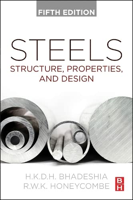 5th edition published 2024 |
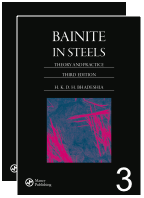 Free download |
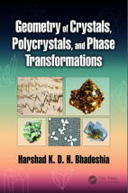 Free download |
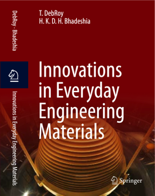 Available |
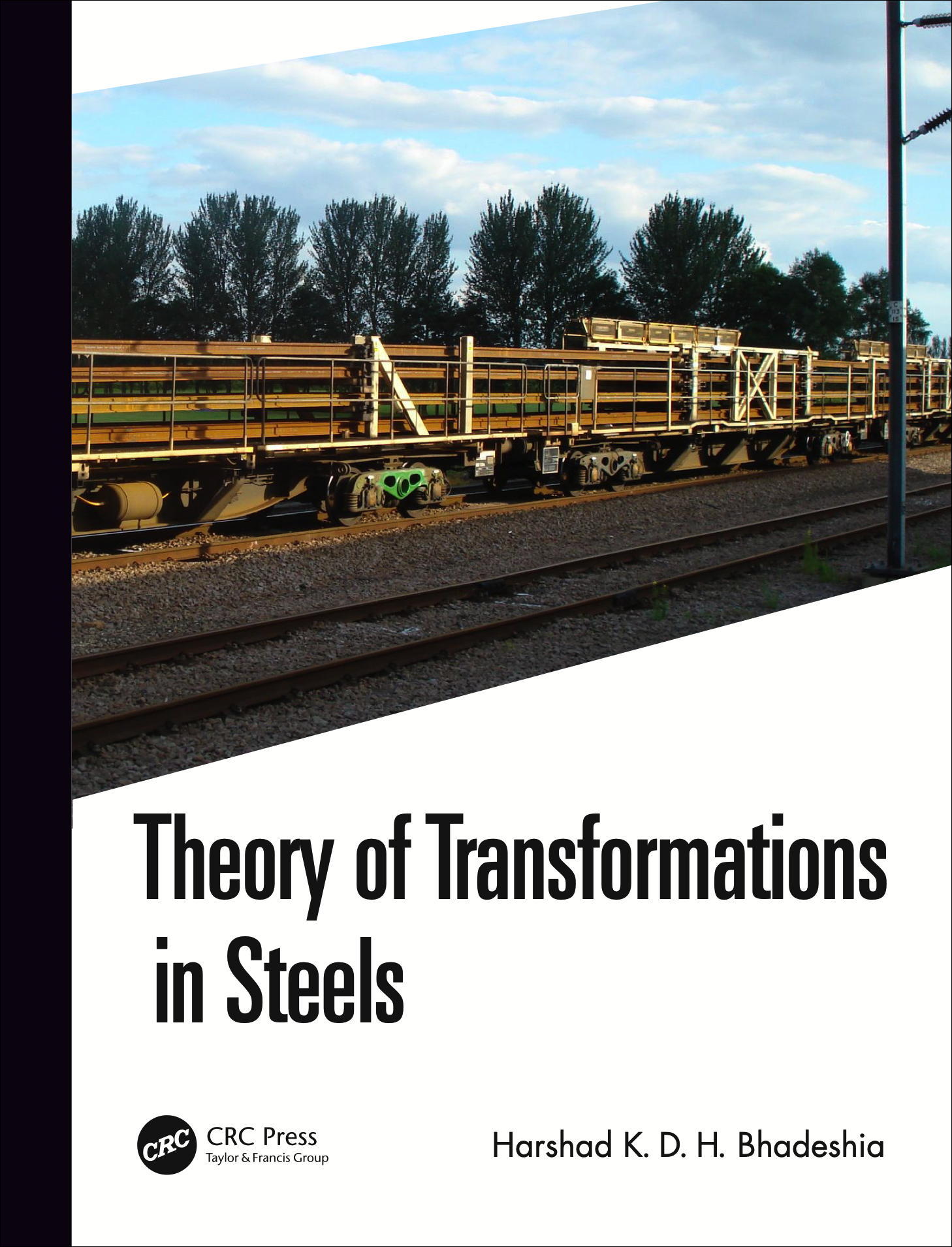 Free download Published 2021 |
 Free download |
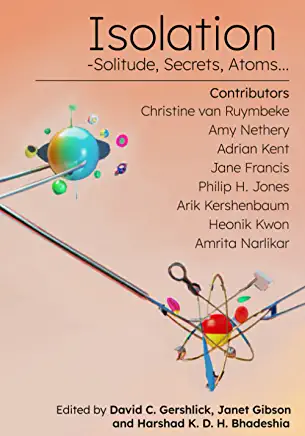 Published 2022 |
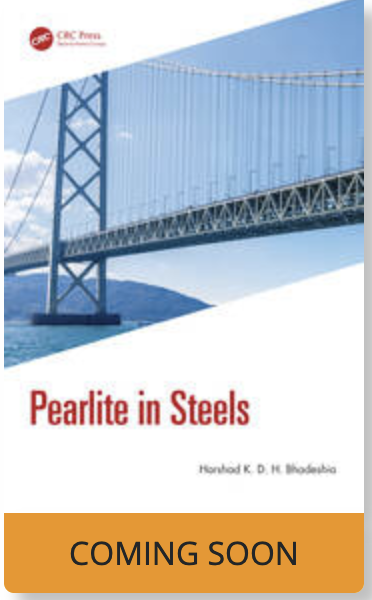 October 8th, 2024 |
| PT Group Home | Materials Algorithms |